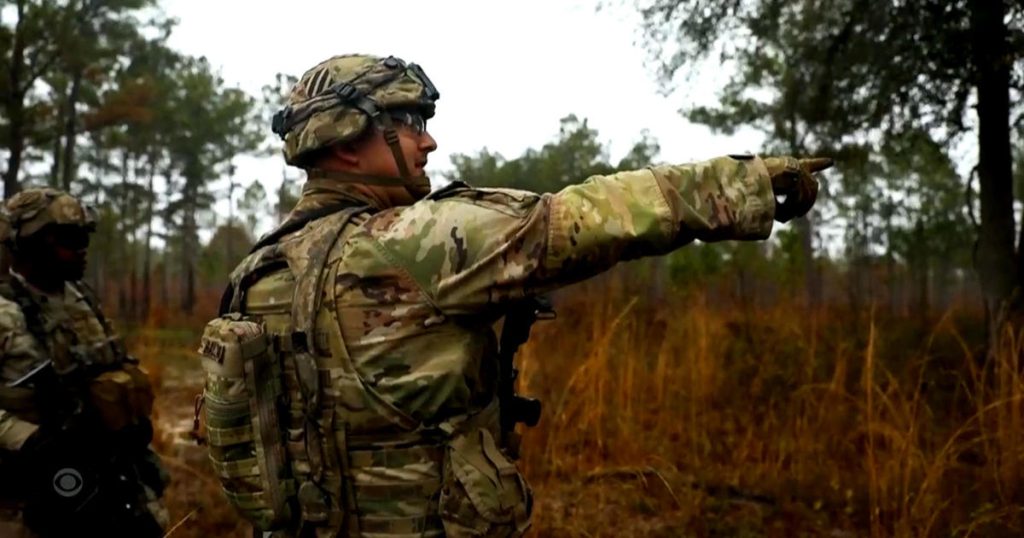The Army is continuously exploring new technologies to stay ahead in future conflicts. They are testing out new equipment and tactics in training exercises to ensure they are prepared for any potential threats. One such exercise took place at Fort Johnson in Louisiana with the Army’s 101st Airborne Division, where CBS News correspondent Charlie D’Agata got an inside look at how they are preparing for the challenges of tomorrow.
The Army’s focus on innovation is evident in the various technologies they are incorporating into their training exercises. One such technology is the Integrated Visual Augmentation System (IVAS), which provides soldiers with augmented reality capabilities on the battlefield. This allows them to have a real-time view of the battlefield, including enemy positions and potential threats, enhancing their situational awareness and decision-making skills. The Army is also testing out new drones and unmanned aerial vehicles (UAVs) that can provide reconnaissance and surveillance capabilities in future conflicts.
In addition to technological advancements, the Army is also focusing on improving their tactics and strategies for future conflicts. They are incorporating new techniques for urban warfare, including training exercises in mock cities to simulate realistic combat scenarios. This allows soldiers to practice navigating urban environments and responding to threats in challenging terrain. By staying ahead in tactics and strategies, the Army aims to be better prepared for the complexities of modern warfare.
The Army’s emphasis on training and readiness is crucial for ensuring they are prepared to face any challenges in future conflicts. They are constantly evaluating their training exercises to identify areas for improvement and refine their tactics. Through rigorous training and realistic simulations, soldiers can develop their skills and enhance their abilities to respond to a variety of threats. This focus on readiness is essential for maintaining the Army’s effectiveness in the rapidly evolving landscape of modern warfare.
One of the key aspects of the Army’s training exercises is the use of realistic scenarios to simulate the challenges of future conflicts. By creating scenarios that mirror potential threats and challenges, soldiers can practice responding to complex situations and develop their decision-making skills under pressure. This helps to prepare them for the uncertainties of modern warfare and instills a sense of readiness and resilience in the face of adversity. By constantly challenging themselves in training exercises, soldiers can better prepare for the unexpected in future conflicts.
Overall, the Army’s approach to testing out new technologies and tactics for future conflicts underscores their commitment to staying ahead in an ever-changing landscape of warfare. By incorporating cutting-edge technologies, refining their tactics, and focusing on training and readiness, the Army is ensuring they are prepared to face any challenges that may arise. Through continuous innovation and adaptation, the Army is positioning themselves to be a formidable force on the battlefield and ready to confront the complexities of modern warfare with confidence and skill.


